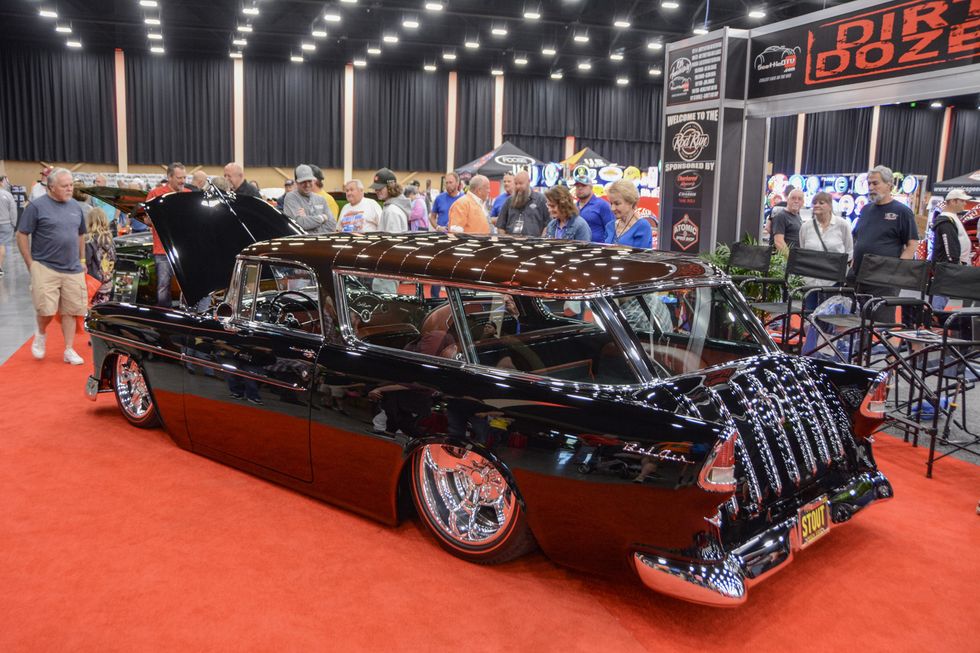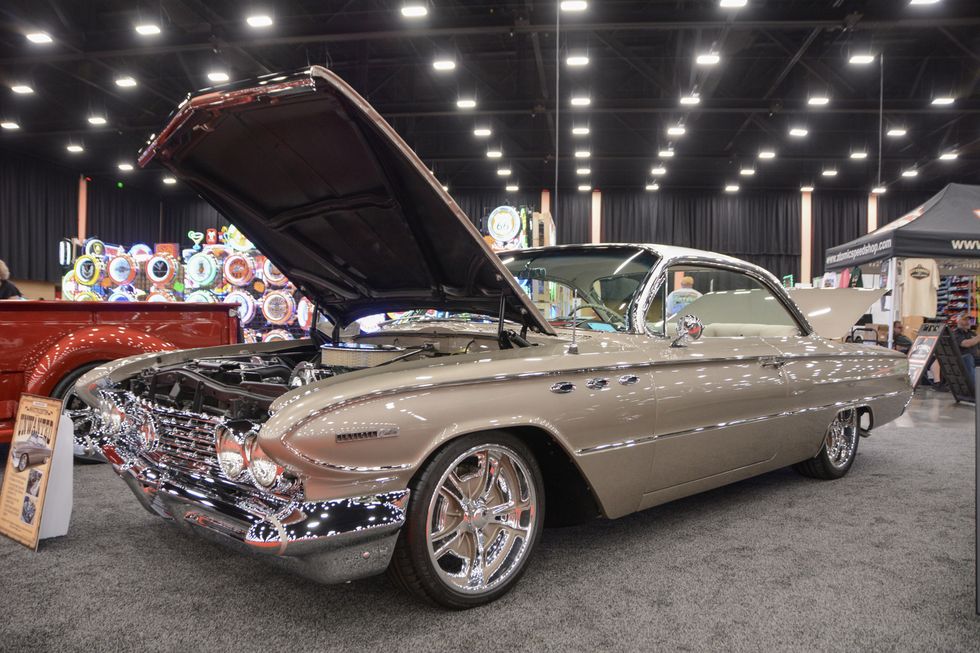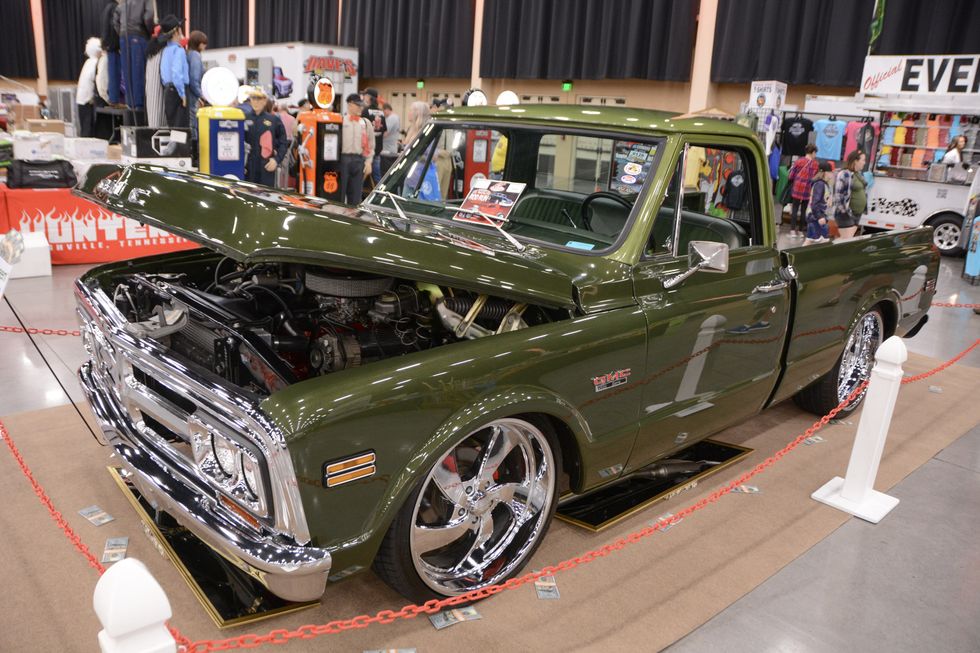
Buy
Resources
Entertainment
Magazine
Community
1988 Chevrolet Nova Twin Cam. Images courtesy GM Media Archives.
In 1988, Chevrolet launched a new model variant that came to market with the brand's first-ever four-valve-per-cylinder head, dual overhead camshafts, electronic fuel injection, a variable induction system to boost high-end performance and a stratospheric 7,500 RPM redline. As you'd expect, this mysterious car came with a four-wheel independent sport suspension and four-wheel disc brakes, too, but the car in question wasn't a Corvette, Camaro or Beretta. Purists will argue that it wasn't entirely a Chevrolet, either, because many of its parts came straight out of the Toyota parts bin. The mystery Chevrolet that few enthusiasts have ever heard of is the 1988 Chevrolet Nova Twin-Cam, a compact car that seemed to follow the same recipe served up by the Cosworth Vega of the mid-1970s: Take a compact car, stuff it full of cost-be-damned sophisticated four-cylinder engine, improve the handling and release it on an unsuspecting public.
Prior to the 1990 launch of the Saturn brand, General Motors found itself struggling to compete with compact cars from foreign automakers such as Toyota, Nissan and Volkswagen. Adopting an "If you can't beat them, join them," philosophy, General Motors established New United Motor Manufacturing, Incorporated (NUMMI), with Japanese auto giant Toyota in 1984. Using an existing (but shuttered) General Motors plant in Fremont, California, Chevrolet would build its fifth-generation Nova at the plant, learning all that Toyota could teach it about lean manufacturing. Toyota, on the other hand, gained a manufacturing site in North America, and would soon begin producing its Corolla (platform mate to the Chevy Nova) in the same facility.
"Understated" is the term that best describes the Nova Twin-Cam's styling.
While General Motors hoped to increase quality and streamline production of its compact-car offerings, Toyota was hoping to circumvent restrictions on automotive imports proposed by the U.S. Congress. Prior to the plant's reopening in 1984 (two years after it was shuttered for numerous reasons, including problems with its workforce), selected workers were sent to Japan in order to learn Toyota's unique production system, which emphasized quality and teamwork. This training imparted a new attitude on the UAW workers at the plant, and production quality scores soon rivaled those from Japanese manufacturers.
The NUMMI-built Nova may have been well-built, but from an enthusiast's perspective it was about as tasty as boiled cardboard. Its Toyota-sourced 1.6-liter four-cylinder engine sent just 74 horsepower to the front wheels, but the car did give fuel-economy-minded buyers the option of a five-speed manual transmission (though many buyers still opted for the three-speed automatic). Even its box-on-box sedan styling seemed uninspired, and while the four-door hatchback version looked a bit better, styling alone wasn't enough to draw import shoppers in to Chevrolet showrooms. Like the brand's other period offerings of Japanese origin (the Isuzu-built Spectrum and the Suzuki-built Sprint), the Nova was sold on its fuel economy, quality, and, to a lesser degree, value (but only after deep manufacturer discounts were factored in).
Aside from the red body stripe, only the Twin Cam badge and red bow-ties distinguished it from other Novas.
As the 1980s came to a close, General Motors prepared to launch its Geo brand in an attempt to lure import shoppers into a "world brand" showroom. Knowing that 1989 would be the final year for the Chevrolet Nova, its engineers decided to send the model off with a high-performance bang, and the limited-production Nova Twin-Cam was born. Starting with the same AE82 Corolla platform that underpinned base Nova models, NUMMI added four-wheel disc brakes, stiffer springs, gas charged shocks, larger anti-sway bars and additional suspension bracing to make the car capable of better handling. While wheel diameter remained at 13 inches (same as on base Nova models), conservatively styled alloy wheels shod with 175/70HR13 Goodyear Eagle GT tires increased grip noticeably.
Better handling was one thing, but the heart of the Nova Twin Cam was, of course, its Toyota-designed engine. Originally appearing in the 1983 Toyota Corolla FX-16, the double-overhead-camshaft 1.6-liter four-cylinder engine boasted 16 valves and a healthy 68.75 horsepower per liter, not bad for a normally aspirated engine in the 1980s. Taking advantage of the car's lofty redline, a skilled driver could take the compact sedan from 0-60 MPH in less than 10 seconds, running the quarter-mile in the 17-second range. While not particularly fast in a straight line, the 2,350-pound car was agile, and better suited to carving corners than many compact sedans of the day. By all period accounts, it was an engaging car to drive, something that couldn't be said for many Chevrolet compacts since the demise of the Cosworth Vega.
Even the basic interior did little to convey the car's semi-sporting mission.
The Nova Twin-Cam came in any color the buyer wanted, as long as that choice was metallic black with a gray cloth interior. The same could be said of body style, as the Twin-Cam was produced only as a four-door sedan and not as a hatchback. Perhaps that played best to the Nova Twin-Cam's "Q-Ship" mission; aside from the previously mentioned alloy wheels, only a red decorative rub strip was used to adorn the compact's plain-black-wrapper exterior. Whatever Chevrolet's intentions, buyers looking for performance-oriented cars wanted a bit more of an exterior styling statement than the Nova Twin-Cam served up, and its $11,395 sticker price probably didn't win it many fans, either. That was $2,420 more than the sticker price of a base Nova sedan and exactly the same base price as a 2.8-liter V-6-equipped Camaro coupe.
While the Nova Twin-Cam disappeared following the 1988 model year, a remarkably similar vehicle appeared in GM's Geo lineup from 1990 to 1992. The Geo Prizm was the NUMMI-built continuation of the Chevrolet Nova (in a slightly sleeker package), and its high-performance model, the Prizm GSi, received an updated version of the 1.6-liter twin-cam Toyota engine, now rated at 130 horsepower. Unlike the limited-production Nova, NUMMI produced as many Prizm GSis (in both sedan and hatchback variants) as dealers ordered; thanks in part to aggressive marketing of the Geo brand, it sold in higher numbers, too.
The NUMMI plant produced roughly 3,300 examples of the Nova Twin-Cam during the car's one-year run, though it's not clear how many survive today. Few were treated as collectible, and most were simply discarded after having passed through two or three generations of drivers. While the car may not be as memorable as a 1969 Camaro Z/28 or a 1990 Corvette ZR-1, it still deserves a place in Chevrolet history.
Recent
Photo: Jeff Smith
If the deck surface of your next set of cylinder heads has been milled 0.010-inch or more, it’s a good idea to check to make sure the heads will sit flush on the block dowel pins. For the SBC, the stock dowel pin is rather tall and can bottom out inside the head – which will not allow the head to sit flush on the block which will cause major sealing problems. The fix is to either drill the dowel pin holes deeper to accommodate the pin or to file the pin to reduce its length. If the pin is even a mere 0.010-inch too long, this will cause all kinds of sealing issues that would be difficult to diagnose.
Too long of a dowel pin will cause the cylinder head to not make contact with the head gasket, or have enough clamping load onto the gasket. This can cause water leaks, oil leaks, or worse yet, leakage of combustion out of the cylinder.
We measured the pin height on one of our small-blocks with a height of 0.280-inch and then measured the depth on the aftermarket heads we were using with a depth of 0.470-inch, which gives us an excess of clearance – but it’s still a good thing to check.
This idea can be applied to any engine, not just the small-block Chevy. LS engines and big-block Chevys use an open center style locating dowel that could also cause problems if not verified.
Parts List
All parts in this list can be sourced from Summit Racing.
- SB Chevrolet Dowel Pin Kit.............................PIO-S-1110
- SB Chevrolet Dowel Pin Kit/Cam Plug Kit.....SUM-150122
- LS Dowel Pin Kit..............................................AAF-AAL-87024
- BBC Pioneer Head Dowel Kit..........................PIO-839005
Keep reading...Show Less
Photo: Tommy Lee Byrd
Tourist towns are no stranger to big crowds and swells of activity, and Pigeon Forge, Tennessee is the perfect example, with a population of approximately 6,000 people. Any given weekend doubles its population, but Rod Run weekend is a whole different animal. It’s been this way for more than 40 years.
The show’s location in the foothills of the Great Smoky Mountains is reason enough for the hype, but a three-mile strip of Highway US-441, known as the Parkway, serves as the perfect cruising strip. Pigeon Forge was formed in 1961, due to the rapidly expanding tourist town of Gatlinburg, Tennessee. The town is situated between Interstate 40 and Gatlinburg, a mountain town that was known for its wild atmosphere during the rod run events of the 1970s. The nightlife of the Gatlinburg rod runs eventually led to it being run out of town. After years of conflict, Pigeon Forge was a natural fit, due in part to the sprawling space, as well as the perfect cruising strip.
The Rod Run now lives on, more than 40 years after making the move to Pigeon Forge. Event organizers host two Rod Run events per year, one in the spring and one in the fall. Thousands of cars and trucks lines the streets of US-441, which is still the ultimate cruising area. The actual car show is held at the LeConte Center, where a huge turnout of cars and vendors packs the giant convention center and spills into the adjacent parking lot. The show features high-end show cars, restored muscle cars, classics and customs of all varieties. The event runs from Thursday to Saturday, offering three full days of action, while the Parkway starts filling in several days prior, as folks jockey for premium parking spots.
Let’s take a look at some of the wildest creations and restored classics that make the Pigeon Forge Rod Run one of the most diverse car shows in the world. It totally consumes the town and provides memory-making experiences for car enthusiasts young and old.
2024 Pigeon Forge Spring Rod Run - Highlights
Photo: Tommy Lee Byrd
<p>The Pigeon Forge Rod Run happens in April and September and consumes the tourist town of Pigeon Forge, Tennessee. The actual event is great, and the street-side action along the Parkway has kept folks coming back for 40-plus years.</p>










Keep reading...Show Less















































